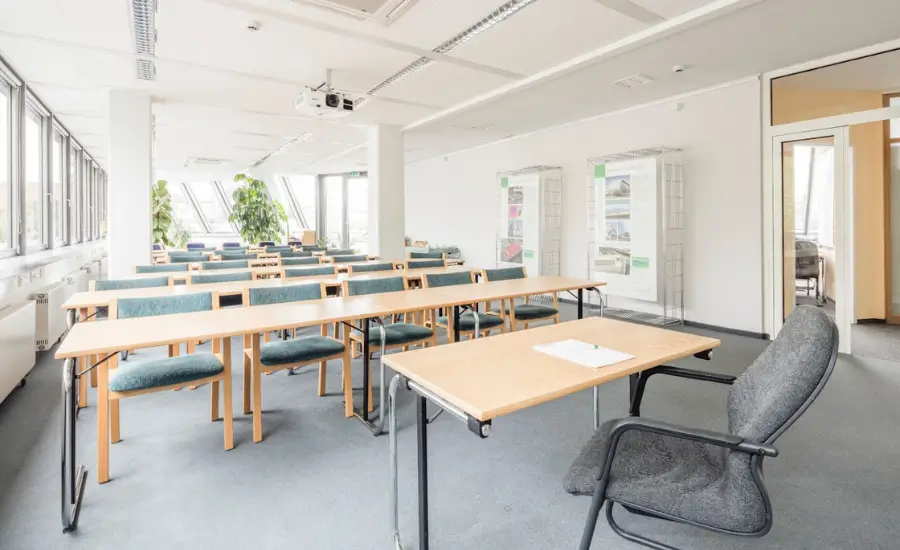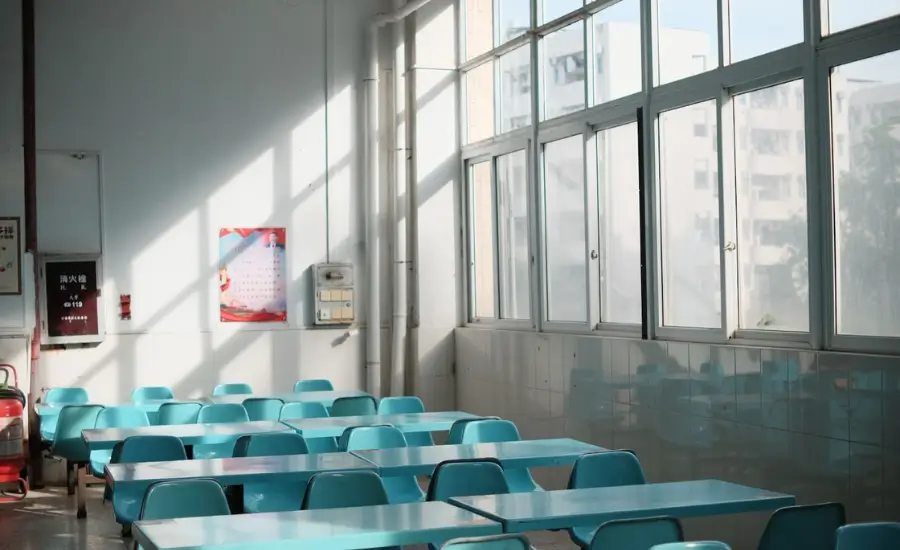Written By: Brad Campbell | December 30, 2024
From letting natural light in to creating an open, inviting learning environment, school windows provide many benefits for students and faculty. They are also often the only thing between inclement weather or would-be intruders and classrooms, so how resilient a school’s windows are is an important part of its overall security.
For example, if a flying piece of storm debris impacts a window or if a burglar or violent attacker tries to force entry through a window, the type of glass it’s made of matters.
Understanding the security vulnerabilities of school windows and how they can be improved upon is essential when it comes to ensuring the safety of students and staff under threatening circumstances.

The majority of windows in classrooms and other parts of schools are made of one of the three following types of glass:
Annealed glass is the standard window glass used for many modern applications, both in homes and older commercial facilities.
Though more durable than older forms of glass, like those found in historic buildings, modern annealed glass is still incredibly fragile. It does not undergo any type of special treatment to improve its impact resistance or change the way it breaks.
If an annealed window is impacted by a flying branch during a storm or if an intruder hits it with a hammer or another tool, it will break apart very easily into sharp, jagged shards.
A would-be intruder can easily break a pane of annealed glass to gain entry to a school and steal valuable equipment or, in a worst-case scenario, attempt to harm students and teachers who are inside.
In addition to leaving the building wide open, sharp shards of broken glass from an annealed window can fly dangerously inwards, potentially harming anyone inside.
As you can probably infer from all this information, annealed windows don’t provide adequate security for schools, making them highly vulnerable to forced entry and storm damage. This is why most modern school windows are made from some type of safety glass.

Tempered glass is a special type of strengthened safety glass. Tempered school windows go through a special heat treatment process that changes the glass’s chemical properties, making it four or five times stronger than standard annealed glass and also changing the way it breaks.
It’s important to understand that the primary purpose of tempered glass is to improve human safety — it does not increase security against threats such as storm damage, forced entry, or active threats.
When tempered glass is shattered, it breaks apart (crumbles, really) into thousands of tiny, relatively harmless granular pieces of glass. You’ve probably seen how car windows break apart, right? Well, that’s tempered glass.
Tempered glass is a good option where student and teacher safety is a concern. If a tempered school window gets broken, it won’t shatter into large, sharp shards that could potentially cause injury.
That being said, tempered glass does not act as a barrier to forced entry or help schools mitigate storm damage and other risks that pose a threat to school security.
The third type of glass traditionally used in some school windows, although it’s becoming less common in modern school buildings, is wired safety glass.
Wired windows have a layer of fine mesh inside the glass, which helps hold the glass together when broken under certain circumstances, such as extreme heat. The primary goal of using wired glass windows in schools is to provide fire safety because the windows won’t explode apart if they are heated up to a breaking point during a fire.
As with tempered safety glass, wired glass is not intended for security purposes, so it won’t keep bad guys out or significantly increase the impact resistance of schoolroom windows.
As we touched on earlier, a school’s windows are often the first line of defense against common threats to the school’s security and the safety of its students and staff, including:
The first threat to schools that can compromise their windows is mother nature, especially for schools located in Florida and other southeastern states within hurricane zones or prone to other extreme weather events, including major windstorms and even tornadoes.
During a hurricane or strong windstorm, the biggest threat to a school’s windows is flying storm debris, which can swiftly smash through a window and leave the building exposed to wind damage, rainwater damage, and even flooding, not to mention putting the safety of building occupants at risk.
Schools in high-risk areas should assess their windows and install impact-resistant glazing or other protective barriers, like storm shutters, to safeguard against debris and potential storm damage.
Another threat that schools face is that of forced entry and burglary. Schools are full of valuable equipment, such as computers and other electronics, that can make them enticing targets for thieves.
Since school windows are often not reinforced in any way against forced entry, all it takes is a couple of blows from a hammer or a pry bar to smash out a window. The thieves can then climb into the school via the broken classroom window or reach through and open a door from the inside, helping themselves to valuables inside.
To safeguard against forced entry and burglary, schools should reinforce their windows with security glazing or other protective barriers. This can help prevent easy access to the building and deter potential thieves from targeting the facility in the first place.
The most serious threat faced by schools across the United States is that of a violent attacker targeting their facilities, intending to harm students and staff inside. This type of incident is known as an active threat scenario.
Things like access-controlled entryway doors, video surveillance, and alarms are all great to have and can be effective deterrents to forced entry and burglary, but there’s one thing they don’t do: create a physical barrier to deny entry, especially in the case of an active threat.
The unfortunate reality is that a violent attacker set on harming students doesn’t care about getting caught on camera or setting off alarms, and they can simply shoot out or otherwise break through a pane of glass to gain unauthorized access to a school.
To protect against active threat scenarios, schools should install bullet-resistant or forced entry-resistant security glazing on vulnerable windows and doors. This adds a crucial layer of defense, slowing down or preventing attackers from gaining access and giving law enforcement more time to respond and neutralize the threat.
The most effective way to harden schools to improve their security is by reinforcing school windows and other glass surfaces, including door glass, with some type of security glass or non-glass security glazing.
For impact protection against storm damage, forced entry and burglary mitigation, and active threat access denial, we highly recommend a polycarbonate-based security glazing retrofit (i.e., ArmorPlast).
Polycarbonate-based security glazing, such as ArmorPlast, is light and thin enough that it can typically be retrofitted over existing glass surfaces using retrofittable framing adapters, with little change to the outward appearance of the building and no need to replace the school windows (although this is an option, too).
These glazing shields look and feel very much like standard school window glass, but are virtually unbreakable. Depending on how many layers of polycarbonate there are and the security glazing’s overall thickness, it can even achieve a ballistic rating, meaning it can actually stop bullets.
Despite ArmorPlast’s strength, which may lead you to believe it could make windows lose some of their benefits in the appearance and functionality departments, this impact-resistant security glazing continues to provide views of the outdoors, crystal-clear visibility, and strong natural light transmission, all with the added benefit of dramatically improved physical security.

With ArmorPlast, schools can maintain an inviting, light-filled learning environments while significantly boosting protection against real-world threats. In short, ArmorPlast fortifies schools without making them look fortified.
Ready to harden your school? Contact Riot Glass today for more information about how we can help protect your school against a full range of security threats.

HOW CAN WE HELP YOU?
